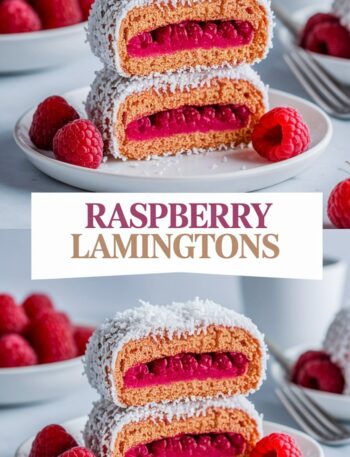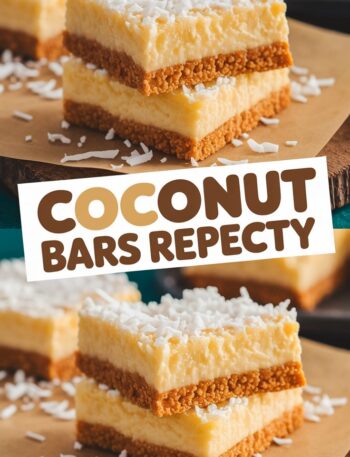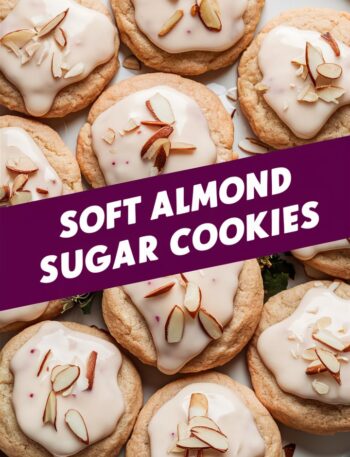When it comes to timeless desserts that never go out of style, few treats can compete with the classic Butter Cake. With its golden crust, tender crumb, and rich buttery flavor, this simple yet luxurious cake has been loved for generations. Whether served plain with a dusting of powdered sugar or dressed up with whipped cream, fruits, or glaze, the butter cake embodies everything we adore about homemade baking — warmth, comfort, and indulgence in every bite.
In this guide, we’ll explore everything you need to know to bake the perfect butter cake — from ingredient selection to expert baking tips, creative variations, and foolproof storage methods. Whether you’re a beginner baker or a seasoned pastry enthusiast, this detailed recipe and guide will help you create a cake that’s not just delicious but absolutely unforgettable.
🧈 What Is a Butter Cake?
A butter cake is one of the most classic types of cakes in Western baking. It’s made using a creaming method — where butter and sugar are beaten together until light and fluffy, creating a soft, airy texture. Unlike sponge cakes that rely on whipped eggs for volume, butter cakes get their lift from creamed fat and a balanced ratio of flour, eggs, and milk.
Butter cake is sometimes called “yellow cake” or “pound cake” (though it’s lighter than the traditional pound cake). It’s the base for many desserts, from birthday cakes to wedding cakes, because it holds frosting well and tastes incredible on its own.
💛 Why You’ll Love This Butter Cake Recipe
This recipe stands out because it’s both easy and foolproof. Even if you’re new to baking, you can achieve bakery-quality results every time. Here’s why you’ll love it:
- Perfectly moist and tender: The balanced ratio of butter, sugar, eggs, and milk creates a soft crumb that melts in your mouth.
- Rich, buttery flavor: Each slice carries that comforting aroma and taste that only real butter can deliver.
- Simple ingredients: You’ll only need everyday kitchen staples — no complicated techniques or hard-to-find items.
- Versatile base: Ideal for layer cakes, cupcakes, or as a foundation for frostings, glazes, and fillings.
- Beautifully golden and fluffy: The creaming process ensures your cake rises evenly and stays light.
Whether you’re baking it for a celebration, a cozy tea-time treat, or just because you crave something special, this butter cake never disappoints.
🧂 Ingredients You’ll Need
Here’s a list of the essential ingredients for making a perfect butter cake. These are simple, but the quality of each ingredient makes a difference.
Main Ingredients:
- 1 cup (226g) unsalted butter, softened – Real butter gives the cake its classic flavor and richness.
- 1 ½ cups (300g) granulated sugar – Adds sweetness and helps create a tender crumb.
- 4 large eggs – Provide structure, richness, and moisture.
- 2 ½ cups (315g) all-purpose flour – The foundation of the cake’s structure.
- 2 ½ teaspoons baking powder – Ensures a soft and fluffy texture.
- ½ teaspoon salt – Balances the sweetness and enhances flavor.
- 1 cup (240ml) whole milk – Adds moisture and lightness to the batter.
- 2 teaspoons vanilla extract – Brings out the cake’s warmth and depth.
🥣 Ingredient Tips for Best Results
- Use room temperature butter and eggs. This ensures they mix evenly for a smooth batter and even rise.
- Measure ingredients accurately. Use the spoon-and-level method for flour to avoid dense cake.
- Don’t skip the salt. Even a small amount makes the buttery flavor shine.
- Use high-quality vanilla. Pure vanilla extract or vanilla bean paste gives a more luxurious taste.
- Whole milk works best. It provides the right amount of fat and moisture. Avoid low-fat or skim milk.
🔪 Step-by-Step Directions
Follow these easy steps to create your butter cake from scratch.
Step 1: Preheat the Oven
Preheat your oven to 350°F (175°C). Grease and flour a 9×13-inch pan or an 8-inch round pan. Line the bottom with parchment paper for easy release.
Step 2: Cream the Butter and Sugar
In a large mixing bowl, use a hand or stand mixer to beat the butter and sugar together on medium speed for 3–4 minutes, until pale, light, and fluffy. This step incorporates air, which gives your cake lift.
Step 3: Add Eggs and Vanilla
Add the eggs one at a time, beating well after each addition. Then stir in the vanilla extract. The mixture should be smooth and creamy.
Step 4: Combine Dry Ingredients
In a separate bowl, whisk together the flour, baking powder, and salt until evenly distributed. This helps avoid clumps and ensures consistent texture.
Step 5: Alternate Wet and Dry Ingredients
Add the dry ingredients to the butter mixture in three additions, alternating with the milk in two additions.
Start and end with the flour mixture. Mix on low speed just until combined — do not overmix, or the cake will be tough.
Step 6: Bake
Pour the batter into the prepared pan and smooth the top with a spatula. Bake for 45–50 minutes, or until a toothpick inserted in the center comes out clean with a few moist crumbs.
Step 7: Cool and Serve
Let the cake cool in the pan for 10 minutes, then transfer to a wire rack to cool completely before slicing or frosting.
🎂 Baker’s Tips for Success
- Avoid overmixing. Once the flour is added, mix only until incorporated. Overmixing can make your cake dense.
- Check your oven temperature. An oven thermometer helps ensure accuracy — too hot, and the cake may brown too quickly.
- Don’t open the oven early. Wait until at least 30 minutes into baking to prevent the cake from collapsing.
- Use quality butter. European-style butter has higher fat content, giving a richer flavor.
- Cool completely before frosting. Frosting a warm cake can cause melting and sliding.
🍋 Butter Cake Variations
Once you master the classic version, the possibilities are endless. Here are some delicious ways to customize it:
1. Lemon Butter Cake
Add 1 tablespoon of lemon zest and replace ¼ cup of milk with fresh lemon juice. The result is a bright, citrusy twist that’s refreshing and tangy.
2. Chocolate Butter Cake
Replace ¼ cup of flour with cocoa powder and add ½ cup melted dark chocolate for an indulgent chocolate flavor.
3. Almond Butter Cake
Add ½ teaspoon almond extract and top with sliced almonds before baking for a nutty aroma and delicate crunch.
4. Marble Butter Cake
Divide the batter in half, mix cocoa into one half, and swirl both together in the pan for a beautiful marbled effect.
5. Brown Butter Cake
Melt and brown the butter before using. This adds a deep, nutty, caramelized flavor that takes your cake to a new level.
6. Coconut Butter Cake
Add ½ cup shredded coconut to the batter and top with a light coconut glaze for a tropical flair.
🍰 Serving Suggestions
- Classic Style: Serve plain with powdered sugar dusting.
- With Fruit: Top with strawberries, raspberries, or peaches and whipped cream.
- Frosted: Pair with buttercream, cream cheese frosting, or chocolate ganache.
- Layered: Slice the cake in half horizontally and fill with jam, lemon curd, or pastry cream.
- Warm Dessert: Serve warm with a scoop of vanilla ice cream and caramel sauce.
This butter cake also makes a wonderful base for trifle or birthday celebrations.
🕒 Storage and Reheating
- Room Temperature: Store in an airtight container for up to 3 days.
- Refrigerator: Keeps fresh for up to a week when covered tightly.
- Freezer: Wrap slices in plastic wrap, then foil, and freeze for up to 3 months.
- Reheating: Warm a slice in the microwave for 10–15 seconds or in a preheated oven at 300°F (150°C) for about 8–10 minutes.
Tip: Always let frozen cake thaw overnight at room temperature before reheating or frosting.
🧁 How to Turn This Recipe into Cupcakes
This batter makes excellent butter cupcakes. Simply fill cupcake liners ¾ full and bake at 350°F (175°C) for 18–22 minutes. Frost with your favorite buttercream or glaze once cooled.
🍯 Frosting and Glaze Ideas
- Vanilla Buttercream: Classic choice for birthday cakes.
- Lemon Glaze: Mix powdered sugar and lemon juice for a tangy drizzle.
- Chocolate Ganache: For a rich, silky finish.
- Cream Cheese Frosting: Pairs perfectly with almond or lemon variations.
🧠 FAQs About Butter Cake
1. What makes a butter cake different from a sponge cake?
Butter cakes rely on creamed butter and sugar for texture, while sponge cakes depend on whipped eggs for volume.
2. Can I use salted butter?
Yes, but reduce or omit the added salt to balance the flavor.
3. How do I know it’s done baking?
Insert a toothpick into the center — it should come out clean or with just a few moist crumbs.
4. Can I make it gluten-free?
Yes, substitute all-purpose flour with a 1:1 gluten-free baking blend containing xanthan gum.
5. Can I make it dairy-free?
Yes. Use plant-based butter and almond or oat milk instead of dairy milk.
6. What pan should I use?
An 8-inch round pan, 9×13-inch pan, or even a bundt pan works — just adjust baking time accordingly.
7. How do I prevent dryness?
Don’t overbake. Remove from the oven once the center is set and edges pull slightly away from the sides.
8. Can I double this recipe?
Yes. Double all ingredients and bake in two pans or a larger pan. Watch baking time closely.
9. How do I make the cake extra moist?
Add 2 tablespoons of sour cream or yogurt to the batter for added moisture and softness.
10. Can I frost it while warm?
Avoid frosting warm cake — always let it cool completely first.
🧮 Nutrition Information (Per Serving)
(Approximate values based on 12 servings)
- Calories: 360 kcal
- Carbohydrates: 45g
- Protein: 5g
- Fat: 18g
- Saturated Fat: 10g
- Cholesterol: 100mg
- Sodium: 150mg
- Sugar: 30g
- Fiber: 1g
🧑🍳 Expert Baking Tips to Elevate Your Cake
- Cream properly: Beat butter and sugar until pale and fluffy — this incorporates air.
- Use room temperature ingredients: Ensures smoother batter and even baking.
- Don’t rush cooling: Cooling too fast can cause the cake to crack or sink.
- Sift dry ingredients: For a finer crumb and better rise.
- Avoid overbaking: Check 5 minutes before the timer ends.
🎉 Occasions Perfect for Butter Cake
- Birthdays and anniversaries
- Afternoon tea or brunch
- Family gatherings and holidays
- Wedding cake base
- Everyday dessert craving!
Butter cake’s simplicity and elegance make it adaptable to any event, big or small.
💬 Reader Tip
“I baked this butter cake for my daughter’s birthday, and everyone asked for the recipe! It’s soft, rich, and absolutely divine.”
Encourage feedback — rate the recipe and share your experience to help others bake confidently!
📝 Conclusion
There’s something deeply nostalgic about the aroma of freshly baked butter cake wafting through the kitchen. Simple yet elegant, this classic dessert stands the test of time — combining richness, softness, and pure buttery bliss in every bite. Whether you’re making it for a celebration or just to brighten your day, this cake delivers comfort and joy from the very first slice.
Once you try it, you’ll understand why generations have loved this recipe. So preheat that oven, grab your mixing bowl, and enjoy baking this Classic Butter Cake Recipe — soft, moist, and perfect for every occasion.




